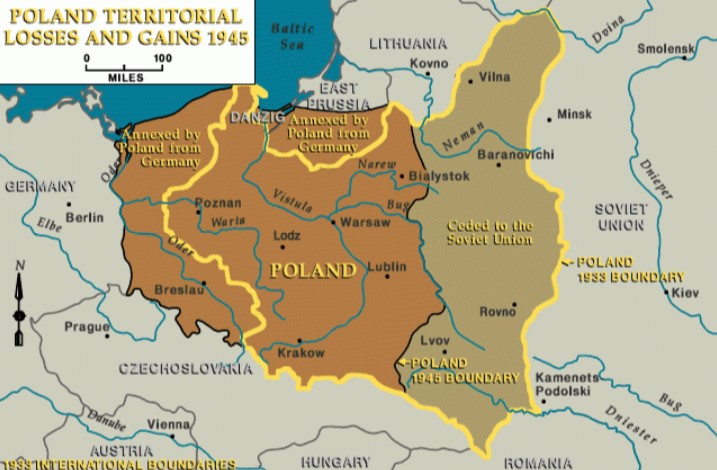The Peace Treaty that Started a War
What happens when two of history’s most evil, malevolent dictators sign a peace agreement? Cataclysm.
HoloDomor Memorial
Russian dictator Stalin spent most of the 1930s murdering his citizens. First, the Holodomor, a Ukrainian word combination translated generally as ‘to kill by starvation.’ Stalin forced collectivization on Ukrainian farmers, especially productive owners of larger farms known as ‘Kulaks.’ A famine resulted in 1932–1933. Estimates vary on the number who died of starvation, ranging from two to three million up to ten million. There remains controversy whether Stalin intended to punish Ukraine or this was an unintentional result.
Later in the 1930s, Stalin embarked on the ‘Great Terror’ or ‘Great Purge.’ Using show trials and invented crimes, Stalin executed perceived enemies of the State. Stalin’s purges covered many groups including army officers, original revolutionaries from 1917, Intelligentsia, and members of various ethnic groups. Secret Police executed some outright, others were sent to the Gulag and died or were murdered there. Estimates differ, the number killed could easily have exceeded one million.
While Stalin was busy murdering Soviet citizens, Hitler rebuilt Germany’s military and started his conquest plans. First, Hitler wanted to bring ethnic Germans located in other countries back into German rule. He began with the Anschluss of Austria, the unification of Germany with Austria. In March 1938, there was no resistance to the German military as they marched into Austria and merged the country into Germany.
Next was Czechoslovakia. The ‘Sudetenland’ region of Czechoslovakia was ethnically German. Hitler pressed the Czechs to give the land to Germany. In September 1938 Czechoslovakia refused but Britain and France, Czechoslovakia’s ‘allies’, agreed to avoid a possible war with Germany. At the time, British Prime Minister Chamberlain infamously declared, ‘I have returned from Germany with peace for our time.’ Later it turned out to be ineffective appeasement. In March 1939, Hitler reneged on the Munich agreement and occupied the rest of Czechoslovakia.
Poland and Germany, 1939
Hitler now moved onto Poland. After World War I, the victorious Allies split Germany into two parts, separated by what was known as the Polish corridor. Hitler pressed Poland to return the land to Germany, but Poland refused, understanding that Hitler would probably break his word as he did with Czechoslovakia just a few months before.
Poland was caught between Germany and Russia. Poland, formerly an independent nation, was split between German, Russia, and the Austro-Hungarian Empire in the 1800s. Following the end of World War I, the Treaty of Versailles restored Poland to independence. War broke out between the new Communist Soviet Union and the restored country of Poland in 1920. Poland invaded the Ukraine, was pushed back to Warsaw, and then counterattacked leading to the pre-World-War-II boundaries.
Concerned about Hitler’s ambition, Poland signed a defense treaty with England and France in the spring of 1939. England and France approached the Soviet Union about an alliance to deter further German aggression. Those talks failed.
Communist Russia and Fascist Germany were enemies throughout most of the 1930s. During Spain’s Civil War of the 1930s, Russia supported the left-leaning Republicans while Germany supported the right-leaning Fascists. Each provided arms and some troops. Hitler hated Bolshevism and Communism in part due to his hatred of Jews who provided some of the Soviet leadership. He also considered Slavic people, including Russians, as Untermenschen (inferior people). Stalin perceived Fascism as a threat to the Soviet Union and its Socialist program.
In secret, Germany and Russia, although adversaries, conducted talks. Hitler wanted to avoid the two-front war Germany faced in World War I. In that war, Germany faced Russia to the east and England / France to the west. If Germany could reach an agreement with Russia, it would be free to face England and France, on a single front. Germany also needed raw materials for its war machine which Russia could supply. And, finally, Germany was not yet prepared militarily for a war against Russia in 1939. Meanwhile, Russia was still recovering from the political and social upheavals of the 1930s and needed more time to continue its industrialization and militarization program.
Eighty years ago, in August 1939, Germany and Russia announced the ‘Molotov – Ribbentrop’ Pact, officially known as the ‘Treaty of Non-aggression between Germany and the Union of Soviet Socialist Republics.’ The pact is named after the diplomats who negotiated it, Russian Molotov and German Ribbentrop. The treaty guaranteed peace between the two nations. An economic deal provided for trade of German industrial goods for Russian raw materials. There was also a secret protocol dividing Poland between the two countries.
Signing the Molotov - Ribbentrop Pact
The world was shocked when the two former enemies announced the treaty. One week after signing the treaty, Germany started World War II in Europe by invading Poland on Sept 1, 1939. Two weeks later, Russia invaded Poland. The countries divided Poland per the secret protocol. With Poland defeated, and a non-aggression treaty in place with Russia, Germany was able to attack France in the West without a second front.
The war was particularly devastating for the three involved countries, Poland, Germany, and Russia. Poland lost almost six million people, over 15% of its pre-war population. Hitler broke the Molotov – Ribbentrop pact in 1941 and invaded the Soviet Union. The Soviets losses exceeded twenty million, over 10% of its pre-war inhabitants. Germany’s deaths topped six million, over 6% of its residents.
Change in Polish Boundaries post WWII
After the war, Russia kept the Polish territory assigned to it by the secret German-Russian protocol. In compensation, Poland was awarded former German territory, both East Prussia and portions of pre-war Germany to its west.
The so-called Peace Treaty signed 80 years ago, between the two dictators, Hitler and Stalin, was a catastrophe for their countries, and the world.



